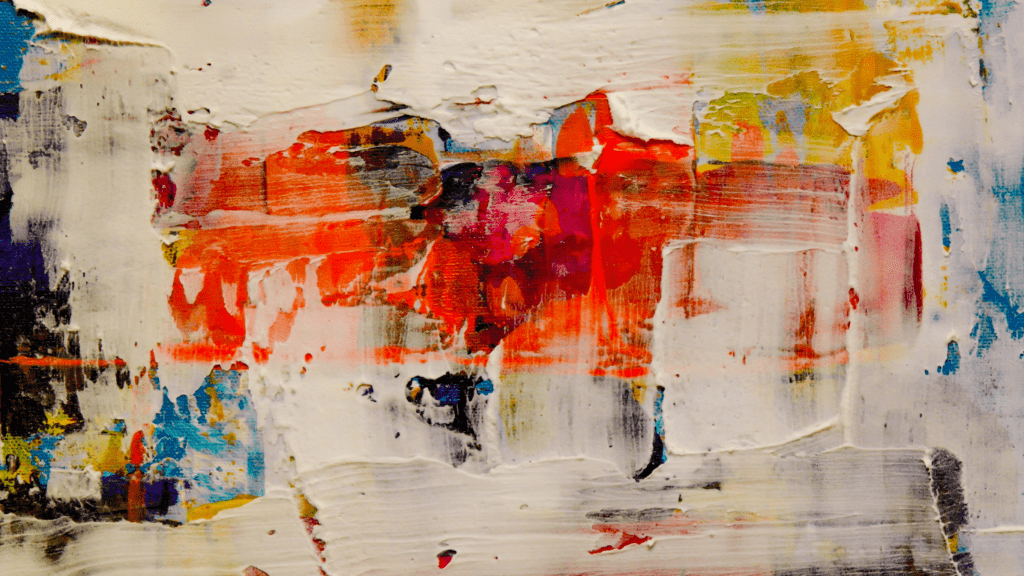The Revival of Abstract Expressionism
Abstract Expressionism, once revolutionary, is seeing a contemporary resurgence. Modern artists resonate with its powerful emotional expressions and socio-political relevance.
Origins and Evolution
Abstract Expressionism originated in the 1940s and 1950s in New York. It emerged as a reaction against war and societal constraints, focusing on conveying internal states through non-representational forms. Jackson Pollock’s “drip” technique and Mark Rothko’s color fields epitomized this movement. Over the decades, the style evolved, influencing various art forms globally.
Key Figures and Their Contributions
Several key figures shaped Abstract Expressionism and its modern revival. Jackson Pollock revolutionized painting with his “drip” technique, emphasizing spontaneity.
Mark Rothko used color to evoke emotion, creating immersive experiences. Contemporary artists like Julie Mehretu and Gary Simmons draw on these foundations, blending historical methods with modern themes. Their work reinterprets the movement, making it relevant to today’s cultural discourse.
Modern Interpretations of Abstract Expressionism

Modern interpretations of Abstract Expressionism embrace contemporary influences and technological advancements, creating a refreshed perspective on the movement.
Influences in Contemporary Art
Contemporary artists draw on diverse influences to reinterpret Abstract Expressionism. Julie Mehretu combines architectural elements with layered abstract forms, providing commentary on urban landscapes and social structures.
Gary Simmons incorporates cultural symbols and erasure techniques to highlight historical memory and identity.
Emerging artists often explore personal narratives and societal issues through abstract forms. Cecily Brown, for example, blends figuration and abstraction, evolving the expressive tradition. Sam Gilliam reimagines color fields by draping and folding canvases, adding a sculptural dimension to the movement.
Integration with Digital Media
- Digital media has significantly impacted the evolution of Abstract Expressionism.
- Artists use software tools for virtual brushstrokes, allowing for unparalleled experimentation.
- Digital platforms also facilitate global collaborations, expanding the movement’s reach.
- Augmented reality (AR) and virtual reality (VR) bring immersive experiences to abstract works.
These technologies enable viewers to engage with art in novel ways, such as viewing dynamic compositions via AR apps or exploring virtual galleries in VR.
NFTs (non-fungible tokens) offer artists new avenues for digital ownership and distribution, revolutionizing the art economy. Digital Abstract Expressionist works can now be verified and sold as unique assets, ensuring authenticity and value in the digital age.
Critical Reception and Public View
The revival of Abstract Expressionism has generated varied critical reception and sparked diverse public views. This section delves into how academics and art collectors have responded to this contemporary resurgence.
Academic Perspectives
Scholars studying Abstract Expressionism often focus on its emotional depth and historical context. They argue that the movement’s rebirth signifies a deeper cultural need for self-expression, as highlighted by contemporary societal challenges.
Leading art historians have noted parallels between current artists and pioneers like Jackson Pollock, identifying similar themes of existential inquiry and non-conformity. Research papers and symposiums frequently explore how modern technology intersects with traditional techniques, widening the scope of academic discourse
. A Critical Inquiry journal article examines the impact of digital media on Abstract Expressionism and cites works by digital-native artists integrating virtual reality into their pieces. University-level art programs now incorporate these modern iterations, enriching the curriculum and providing students with a broader understanding of the movement’s evolution.
Responses from Art Collectors
Modern Abstract Expressionist works have garnered significant interest from art collectors.
- Auction data reveals a rising trend in sales prices for contemporary pieces, reflecting heightened demand.
- Collectors appreciate the emotional authenticity and evolving aesthetics that contemporary artists bring to the movement.
- High-profile art fairs like Art Basel have showcased Abstract Expressionist works, drawing global attendees and sparking dialogue.
- Private collections increasingly feature these modern interpretations, aligning with collectors’ desire for innovative and emotive artworks.
- Prominent collectors, such as Eli Broad, have acquired pieces by new-generation artists, indicating the value placed on this revived artistic dialogue.
Art investment firms also report that their clients view Abstract Expressionism as both a cultural asset and a financially viable investment.


 Harriet Bellvovy, the visionary founder of Innov Art Foundry, has cultivated a platform that seamlessly bridges the traditional and modern aspects of the art world. Under her leadership, Innov Art Foundry has become a hub for the latest art news, keeping enthusiasts and professionals alike informed about significant exhibitions, breakthroughs, and emerging trends. Her commitment to fostering a vibrant art community is evident in the platform's comprehensive coverage, ensuring that artists and art lovers are always at the forefront of the dynamic landscape.
In addition to art news, Harriet Bellvovy has expanded Innov Art Foundry's focus to include art entrepreneurship, providing valuable insights for artists aspiring to turn their creative passions into thriving businesses. Her dedication to exploring diverse forms of artistic expression is further showcased in the platform's deep dive into tattoo art and the transformative role of virtual reality in the art world. Harriet's innovative approach continues to inspire and empower a new generation of artists, making Innov Art Foundry a vital resource in the contemporary art scene.
Harriet Bellvovy, the visionary founder of Innov Art Foundry, has cultivated a platform that seamlessly bridges the traditional and modern aspects of the art world. Under her leadership, Innov Art Foundry has become a hub for the latest art news, keeping enthusiasts and professionals alike informed about significant exhibitions, breakthroughs, and emerging trends. Her commitment to fostering a vibrant art community is evident in the platform's comprehensive coverage, ensuring that artists and art lovers are always at the forefront of the dynamic landscape.
In addition to art news, Harriet Bellvovy has expanded Innov Art Foundry's focus to include art entrepreneurship, providing valuable insights for artists aspiring to turn their creative passions into thriving businesses. Her dedication to exploring diverse forms of artistic expression is further showcased in the platform's deep dive into tattoo art and the transformative role of virtual reality in the art world. Harriet's innovative approach continues to inspire and empower a new generation of artists, making Innov Art Foundry a vital resource in the contemporary art scene.